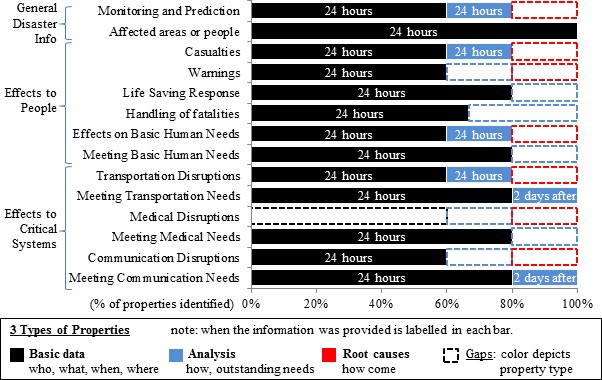Project Description
The quality of a disaster response can affect how severely a society is harmed by a disastrous event. While an efficient response can help to reduce casualties and suffering, a less efficient response may aggravate the situation. In order to include the disaster response as a potentially contributing factor to the overall disaster impact, a methodology has been developed to analyze disaster response in near-real-time.
The analysis is based on the publicly communicated disaster response information issued within the first 0-5 days of a disaster. A disaster response data classification scheme has been developed to facilitate analysis. Near-real-time analysis of numerous disasters has led to the establishment of best practice standards for information content and timing. Comparison to these standards results in the identification of information gaps, a process we have termed an ‘information gap analysis’. Information gap analyses were completed following Cyclone Phailin in India and the Bohol Earthquake and Typhoon Haiyan in the Philippines as part of CEDIM FDA activities.
Information gap analyses can enhance disaster response by identifying potential deficiencies in communicating critical disaster response information to the public. The results of analyses completed for different disasters can then be compared.
Questions being addressed by current research are:
- What is common (or uncommon) between disasters which have resulted in similar (or dissimilar) information gap analyses (e.g. disaster management system, local culture, event specific details)?
- Is there a relation between the amount of disaster response information available to the public and the performance of the disaster management system (e.g. situational awareness, communications plan, coordination capacity, ability to satisfy needs of affected population)?
- What are the various sources of disaster response information and what methods of communication have the highest potential to reach the affected population considering different local and event based conditions?

Figure 1:Information Gap Analysis: Missing Information, Typhoon Haiyan. Based on data produced within 4 days after landfall and contained in the National Disaster Risk Reduction and Management Council (NDRRMC) situation reports.

